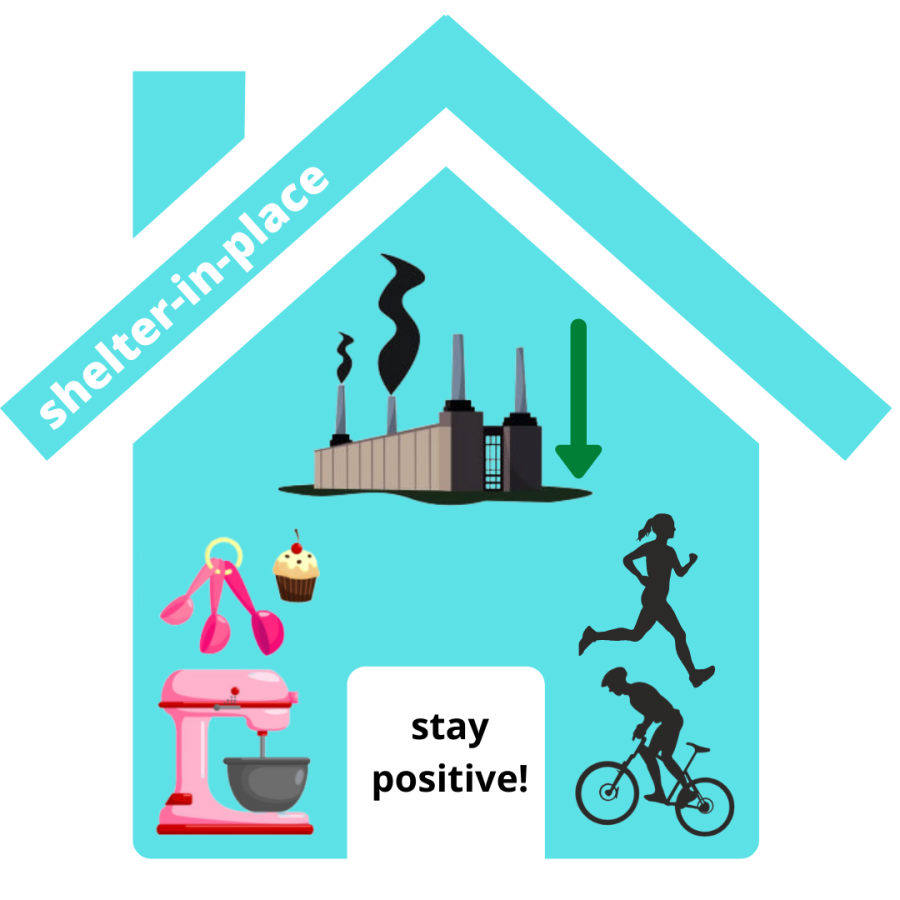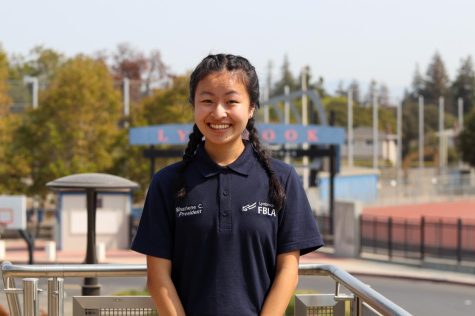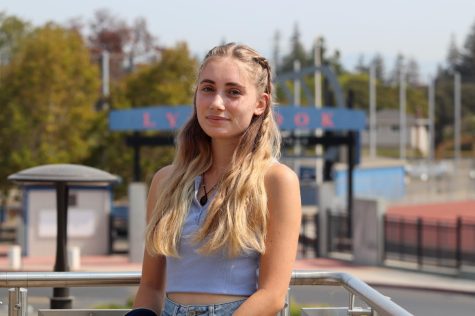Positivity behind the pandemic
May 27, 2020
A series of positive side effects has emerged from the menacing shadow of the coronavirus pandemic. Although people are understandably consumed by fear and uncertainty, it is important to take time to reflect on the good that has come of the situation.
One such side effect observed during this crisis is the reduction in pollution. According to Time Magazine, blue skies and clear water are appearing in places such as Beijing and Venice, where pollution had dominated the cities’ air and water only weeks before. In China, with many factories shut down, carbon dioxide emissions have declined by a quarter since February, according to a recent study. Air travel, which is yet another major source of carbon dioxide emissions, has been halted. People are choosing to stay inside their homes, which is also greatly decreasing transportation emissions. In places like the Bay Area, where the majority of residents drive personal vehicles, the streets remain relatively empty throughout the day, and the air is free of smog.
“Since everything is at home now, there’s less of a need for transportation,” sophomore Srushti Patil said. “I think because of that, pollution has gone down. Whenever I run to a viewpoint and see the whole city, I can definitely tell the air is a lot clearer.”
The decrease in pollution comes with an increase in animal activity. Previously endangered animals are flourishing as a result of reduced human movement. With many beaches in India now empty, the endangered Olive Ridley sea turtles can dig nests and lay their eggs without human disruption. The appearance of stingrays in bays previously crowded with boats has also been noted in an article from the Cosmopolitan.
As schools and businesses have closed, some people are finding themselves with extra time on their hands, giving them the opportunity for self-reflection. Some are taking the time to pursue interests that there was not time for previously and to find new hobbies.
“I’ve enjoyed playing puzzle games and rereading books and doing everything that I wanted to do but wasn’t able to during school,” junior Selena Zhao said.
An increase in free time has also allowed some to build healthy habits, such as exercising. It has become common to see people running and biking outdoors.
“I have noticed that there are more people outside going on walks and jogging around the neighborhood,” Patil said. “As someone who’s been running every day even before quarantine, it seems like there are people everywhere and I’m just trying my best to social distance.”
“I go on frequent walks since I’m trying to keep up my 10,000 steps a day,” College and Career Center counselor Barb Takahashi said.
Aside from exercising, people have been focusing on their diets. Although some continue to order take-out from restaurants, many families are choosing to eat home-cooked meals instead out of fear of contamination. This not only leads to a lower overall calorie count and cholesterol level, but is cost-efficient as well.
“I’ve always had a pretty healthy lifestyle,” Patil said. “My family generally doesn’t go out or get food from restaurants often, but we definitely have been cooking more at home now and getting less take-out.”
In addition to improving their physical health, people have tried to maintain their mental health in numerous ways, such as keeping a schedule for the day or moving away from distractions. Some spend time baking, an activity many have found to be a great way to stay away from electronic devices and bond with family,and posting their finished results on social media. On Instagram, the hashtag #stressbaking had more than 38,000 posts as of May 27, and #quarantinebaking had more than 206,000.
Students have also been participating in community service, working on projects they might not have had the time for previously. For example, Lynbrook students have started organizations such as Keystone and Learn in Shelter to help their classmates and underclassmen with subjects they struggle in. This sentiment of helping others is shared by many, with thousands of people donating money, masks and other personal protective equipment to healthcare centers.
Besides tutoring service organizations, other groups have sprouted up to help with the crisis. Bayreach Student Response Initiative is a recently formed student-run organization combatting the effects of COVID-19. It consists of more than a hundred student volunteers, many of which attend Lynbrook and other schools in the Bay Area, participating in two sectors of Education and Health. Some of their projects include feeding emergency room nurses, aiding underprivileged students, assisting seniors and sewing masks.
Gowns4Good is another organization that encourages people to donate graduation gowns, whether they are collecting dust in a closet or are no longer needed for a 2020 graduation, to serve as personal protective equipment for medical facilities.
During this difficult time, many have found it important to stay hopeful and to make the best out of a less-than-ideal situation. Although the coronavirus pandemic has clouded the world with tragedy and fear, there is a silver lining where people have come together to support each other, showing strength in unfortunate times.
“I think it’s positive that this situation helps us understand our privileges,” Takahashi said. “Although it breaks my heart that so many people are suffering and don’t have a place to shelter, as a result we are more appreciative of what we have and more deeply aware of what others don’t have.”




































































